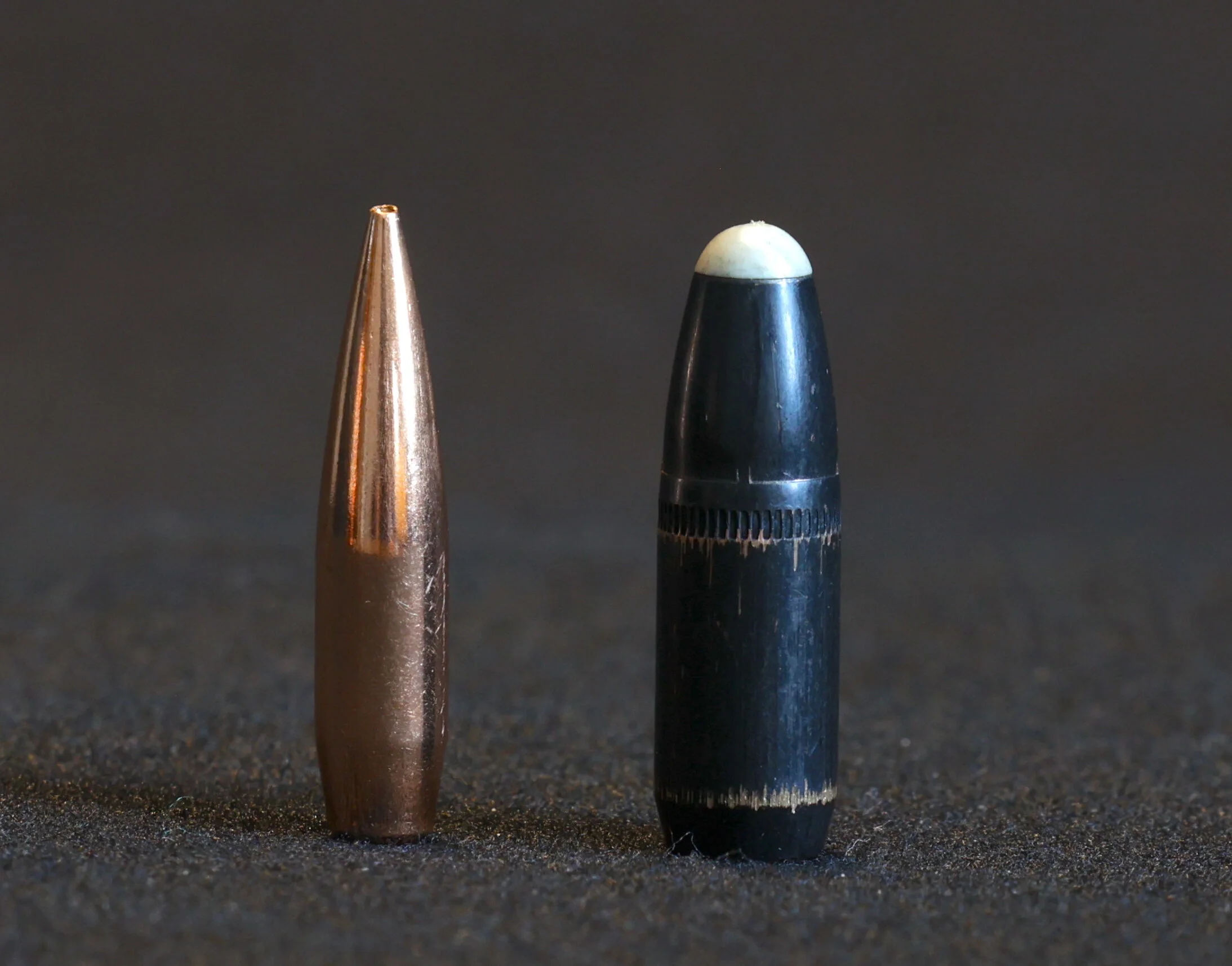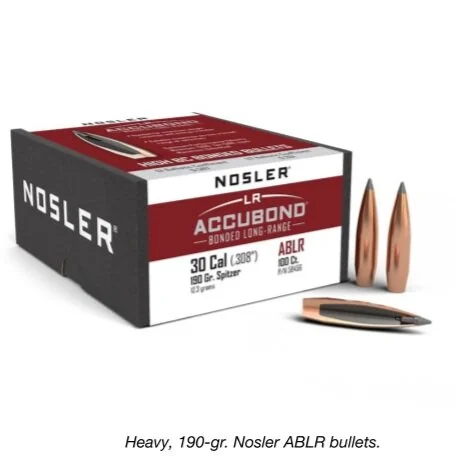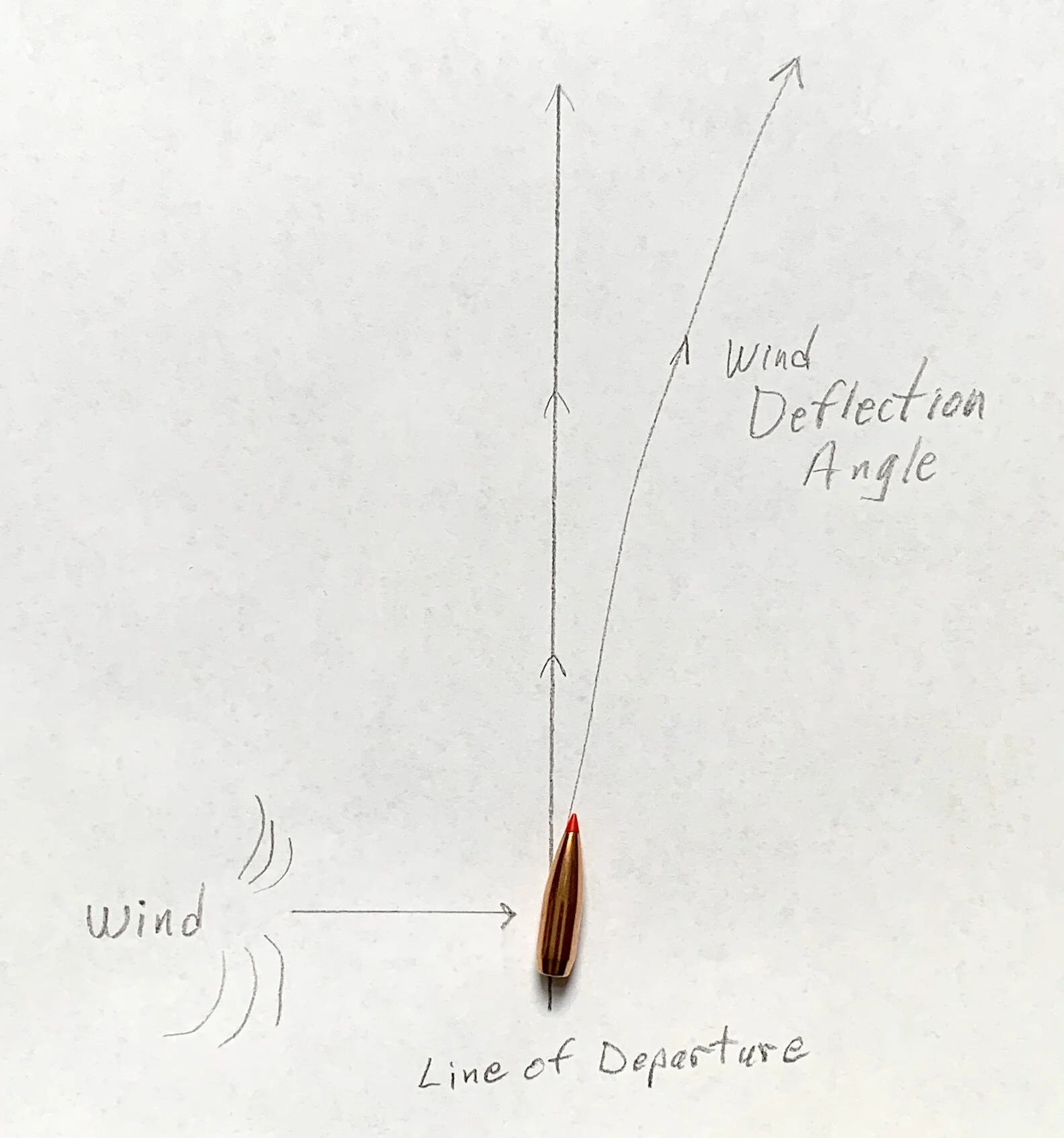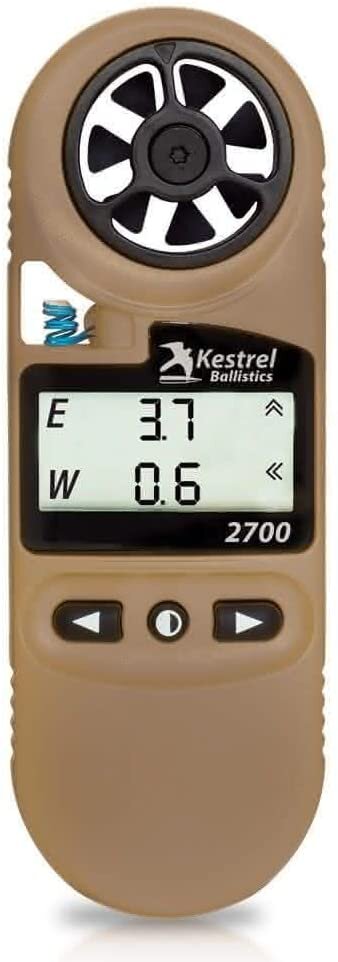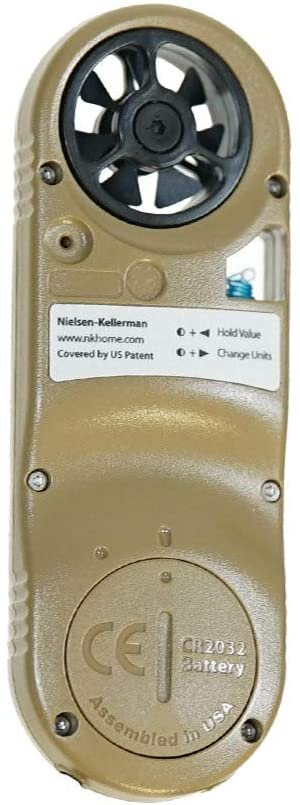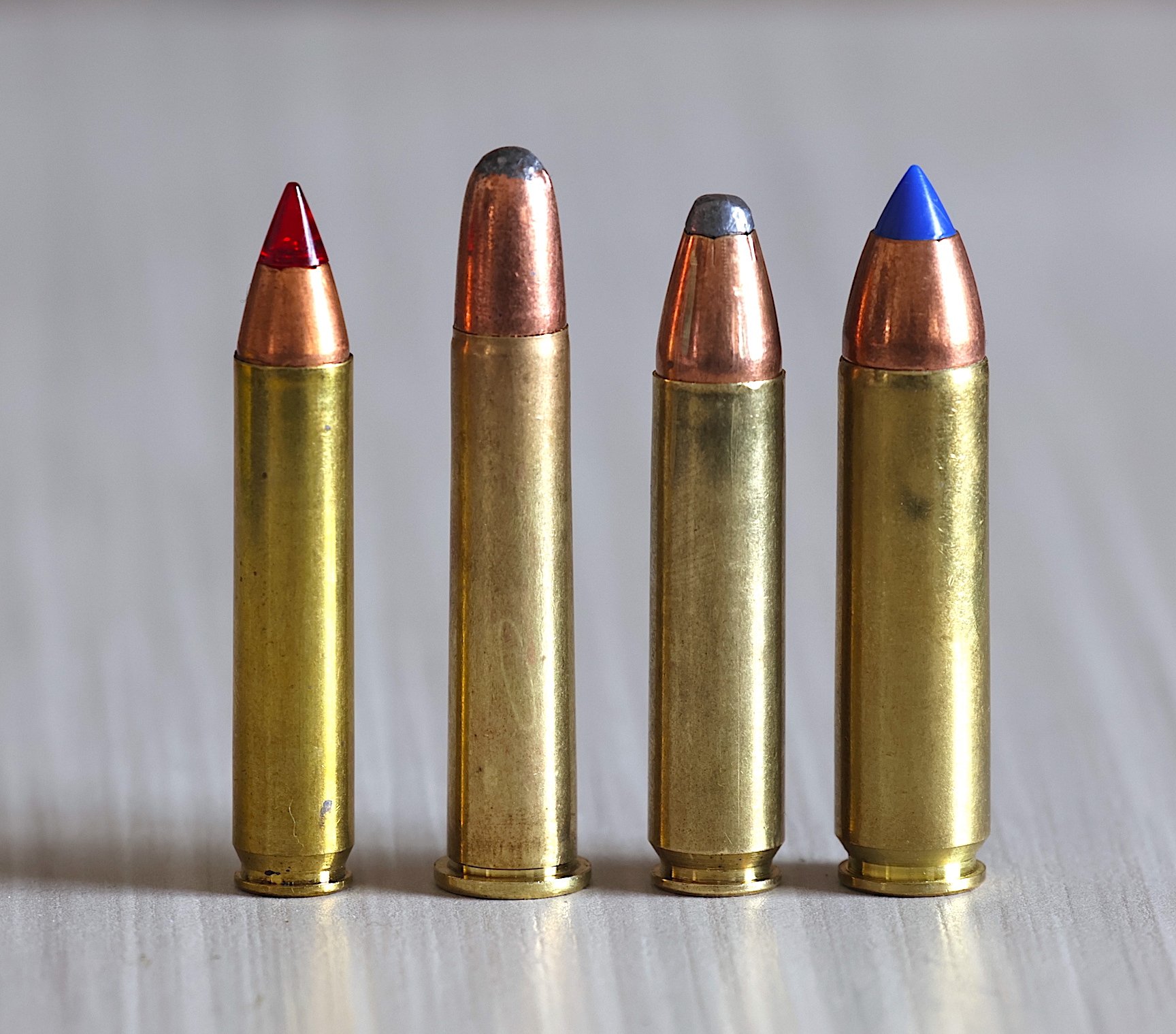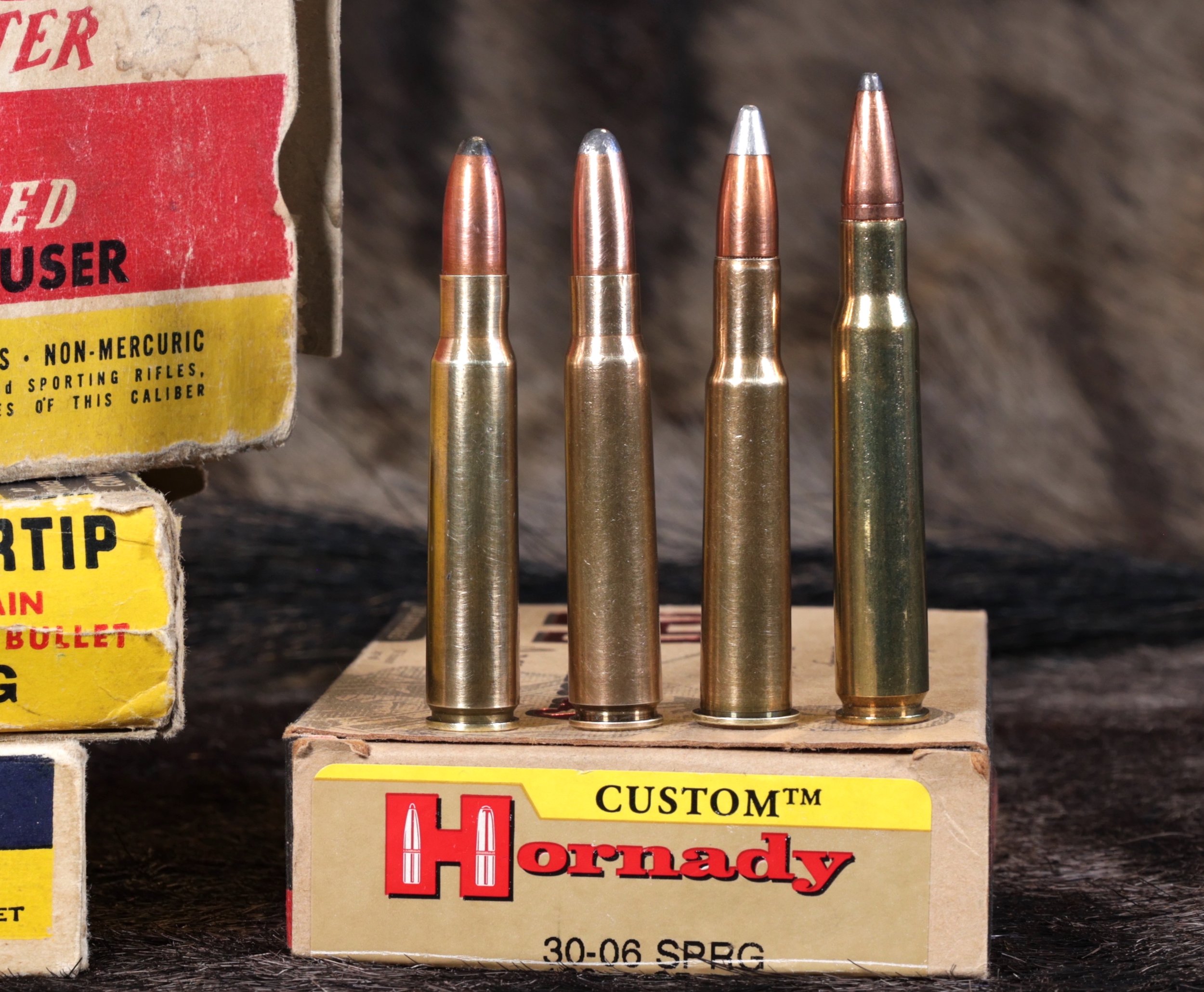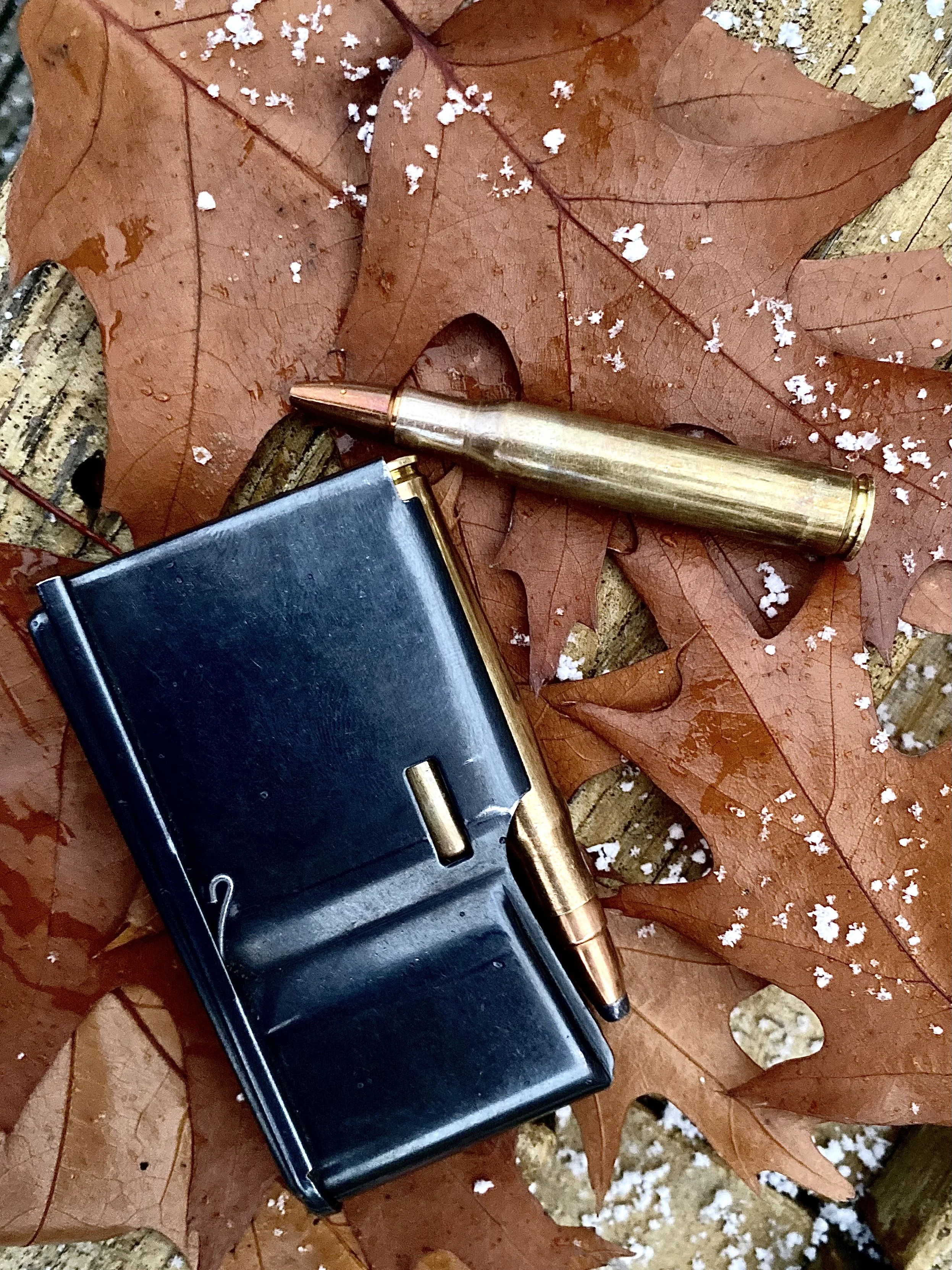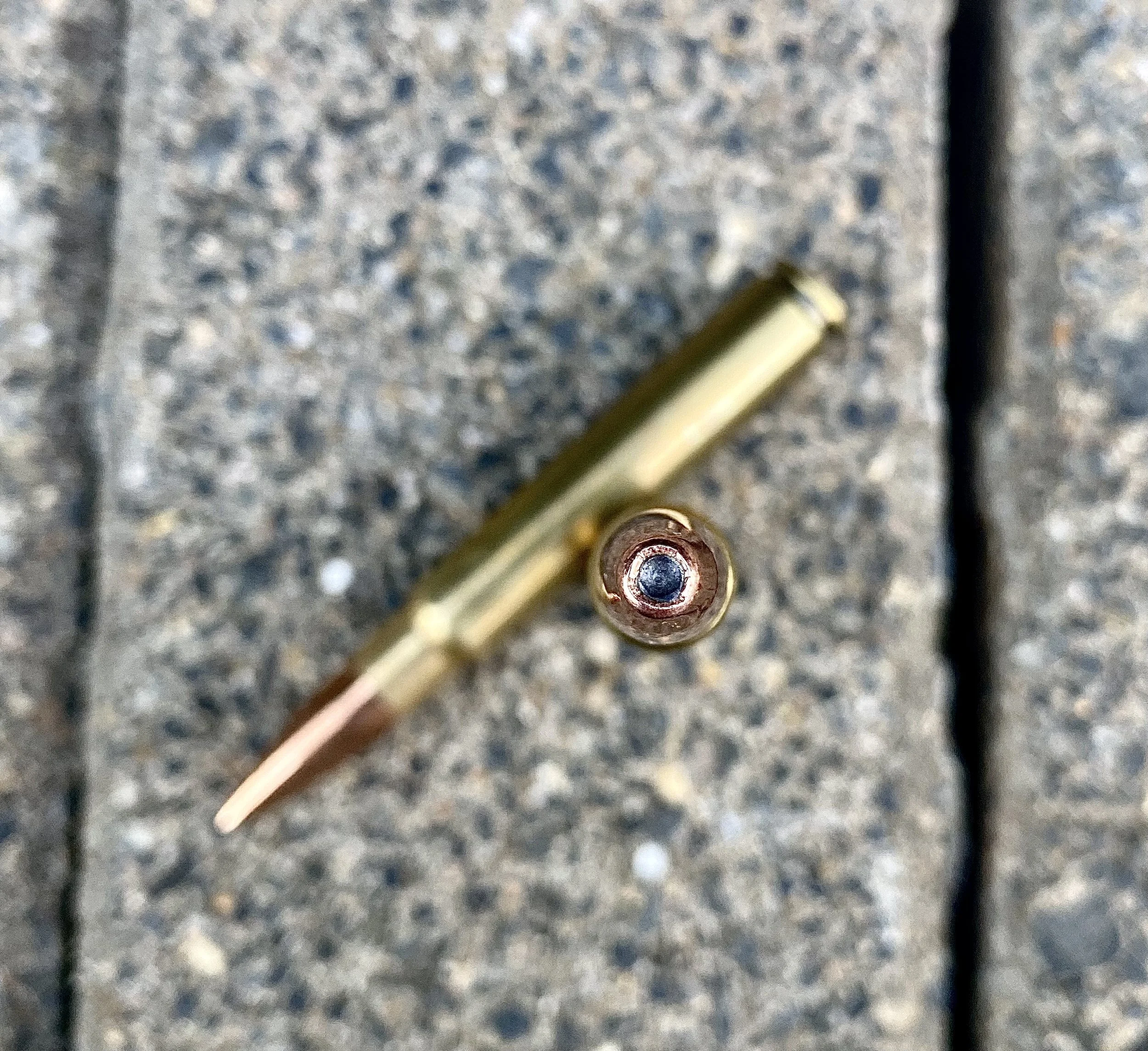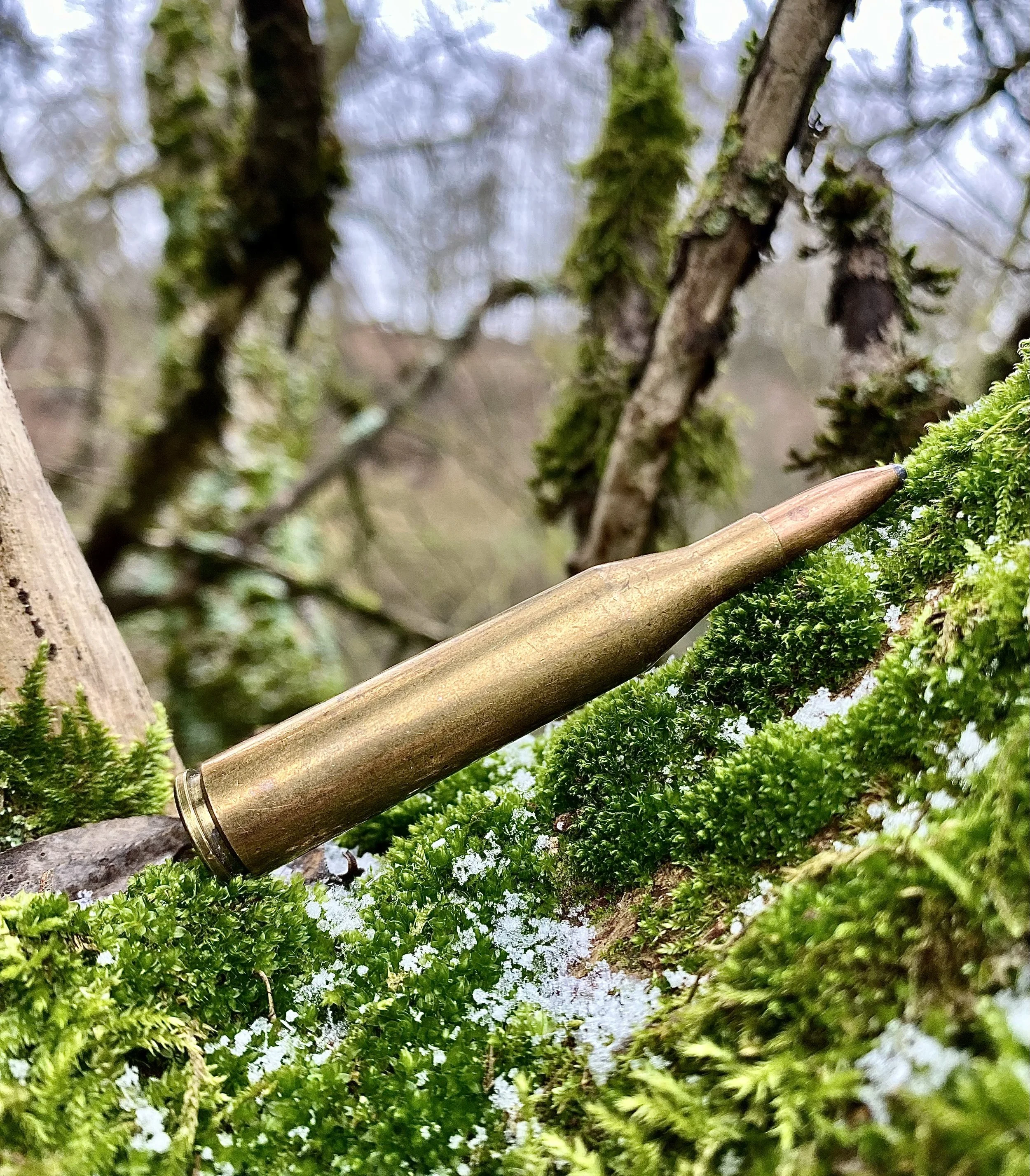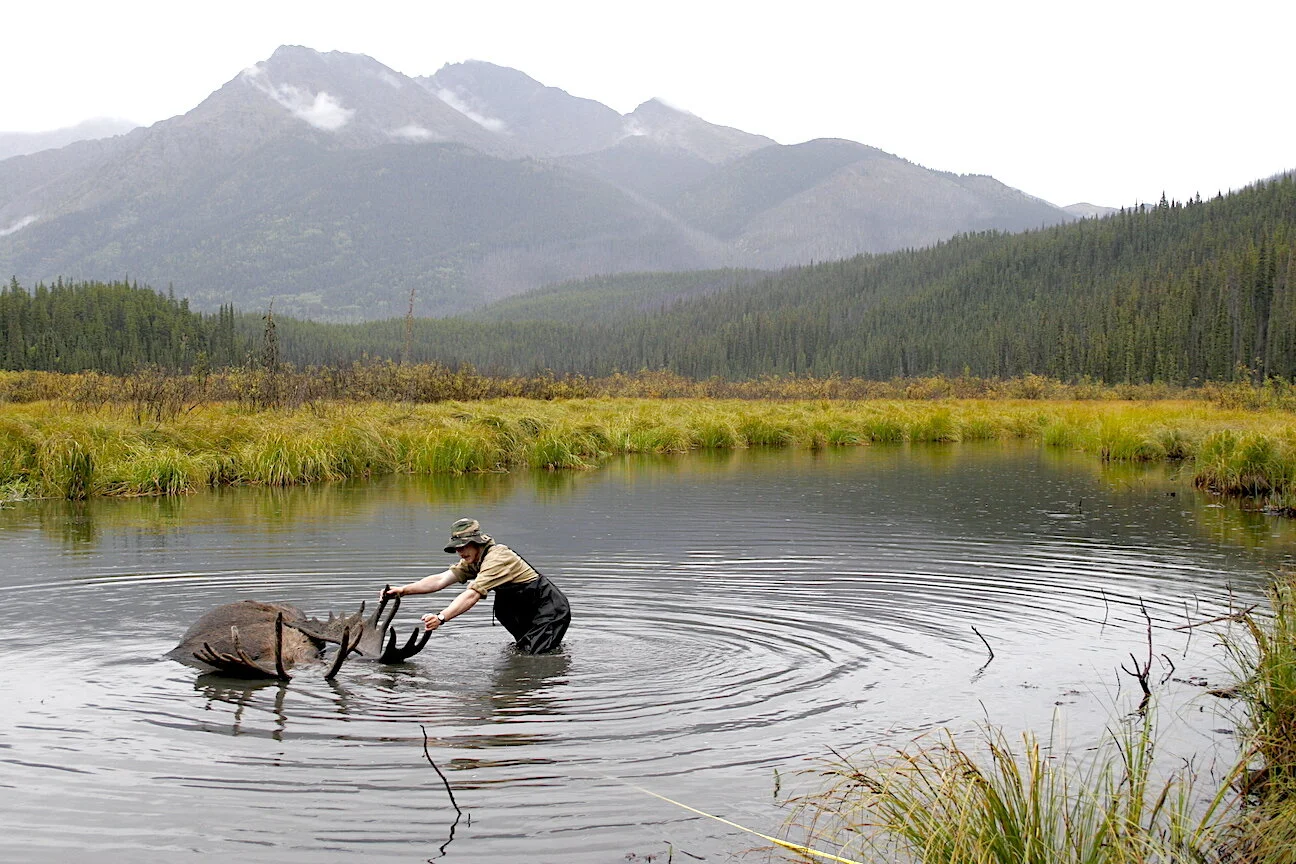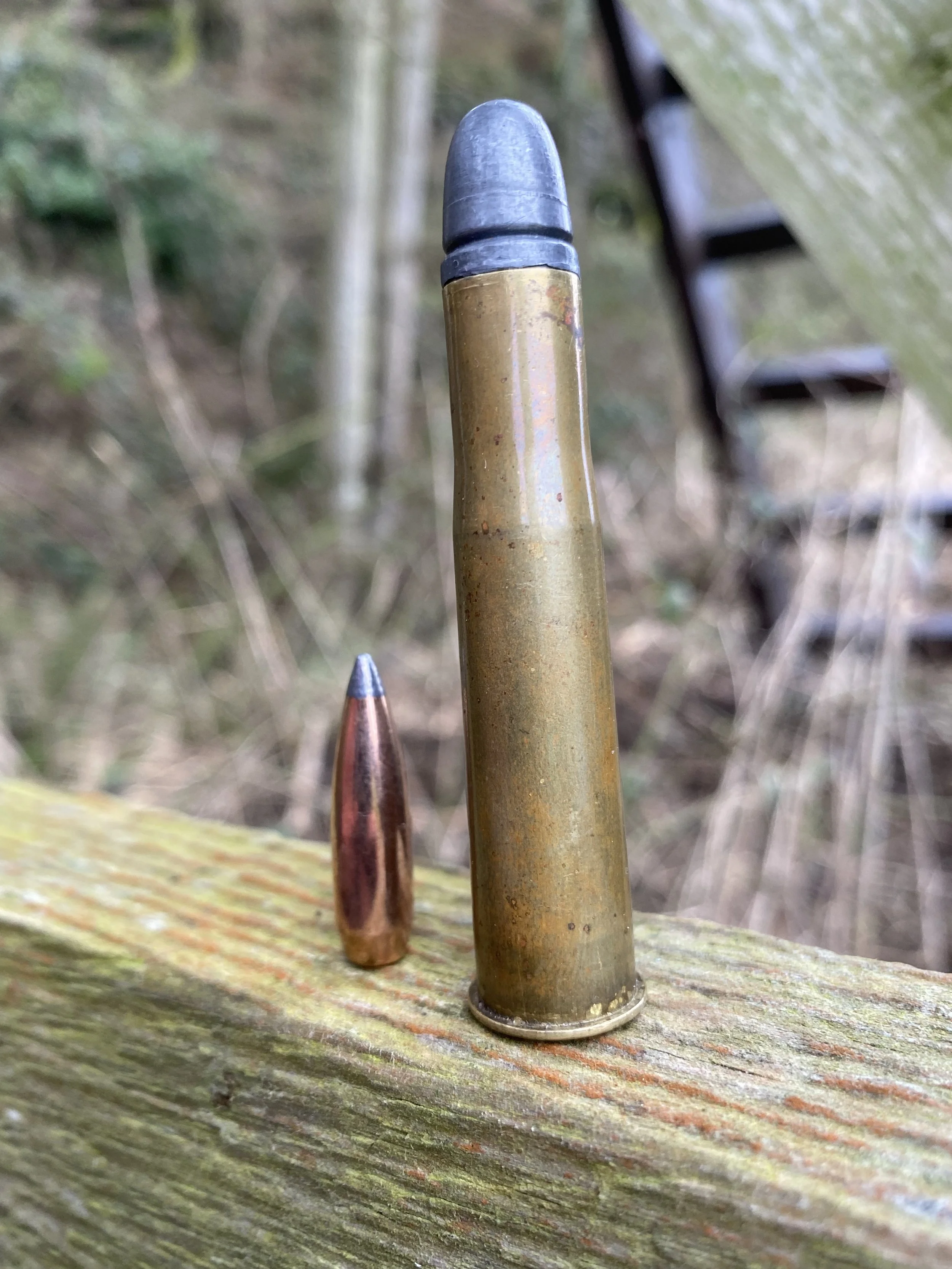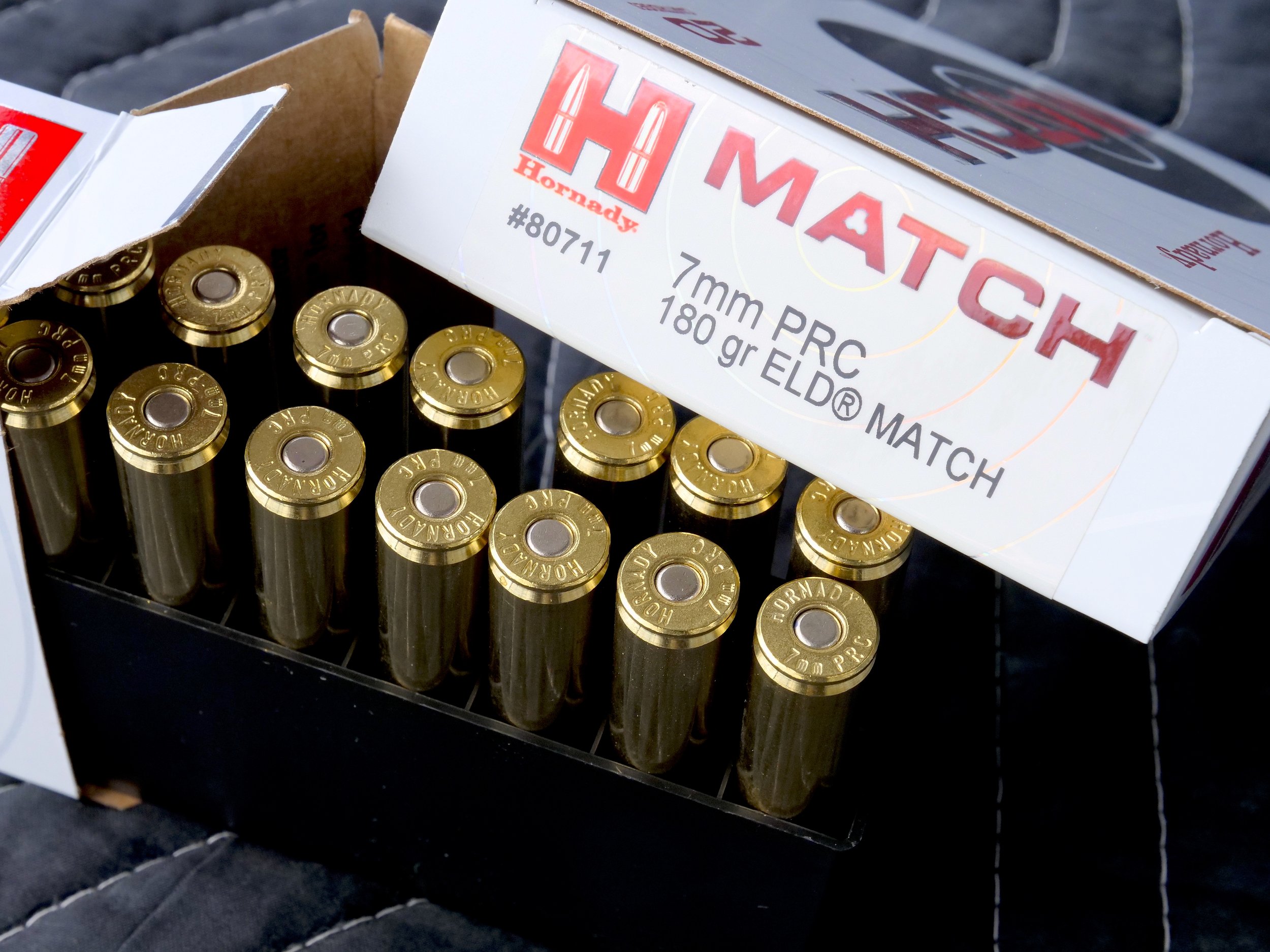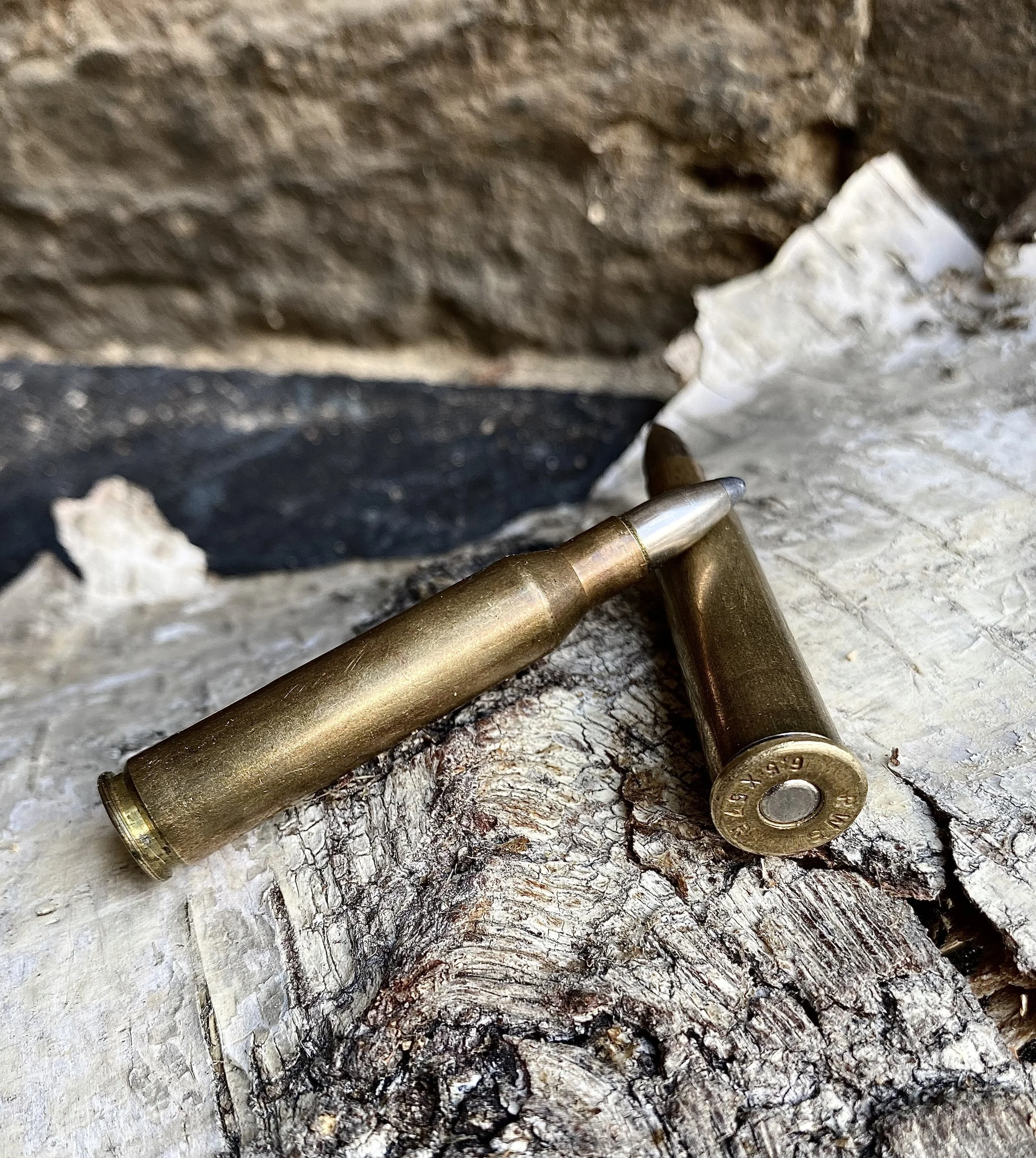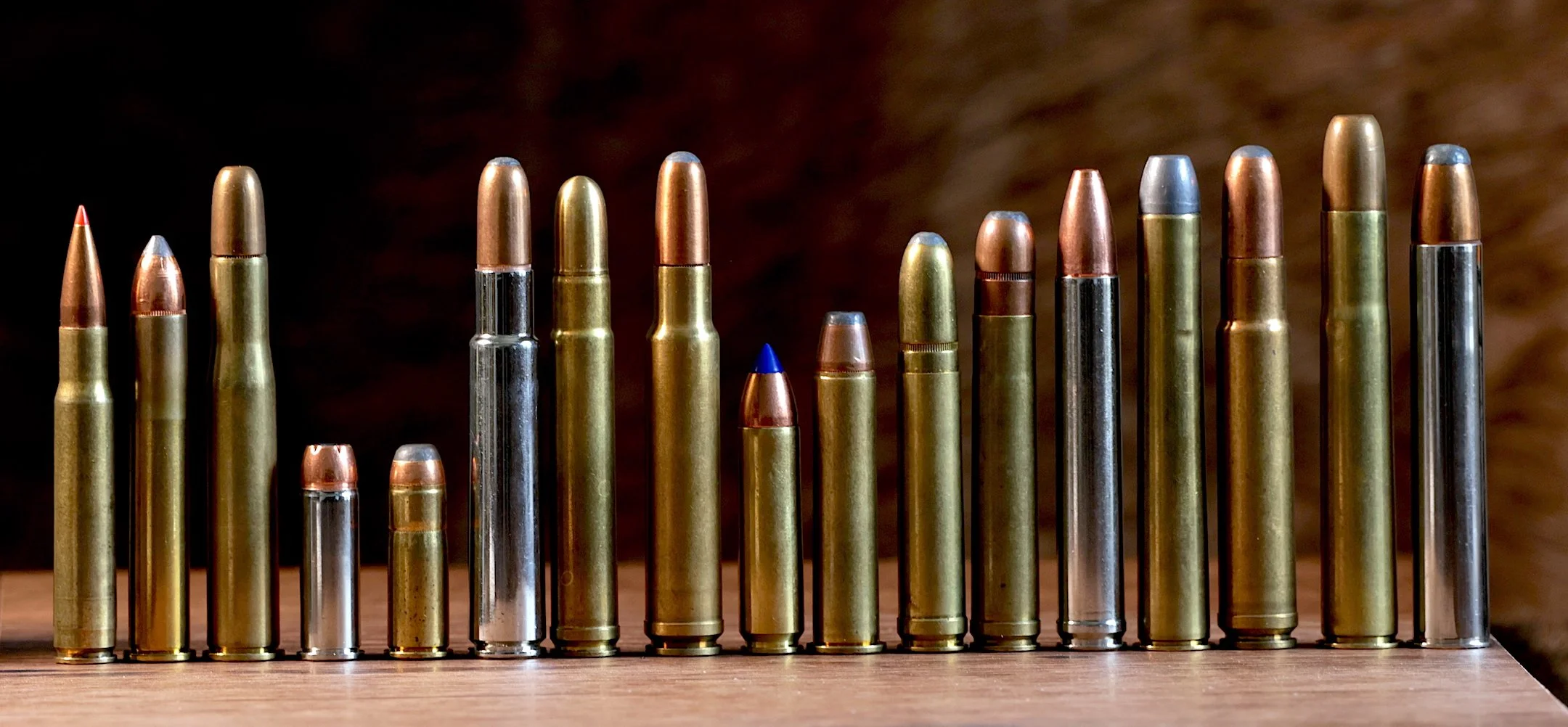Wind Doesn't Blow Bullets
Wind is not the shooter’s friend.
You know what sucks? Wind blowing bullets around. Except… it doesn’t. Not really.
Wait a minute. Anyone who’s shot rifles in a significant breeze comes to realize that those projectiles don’t go where you aimed them. Oh, the up and down will be fine, but the left to right? Significantly messed up, man. Wind drift! So if that’s not the wind blowing the bullet around, what is it? Voodoo?
No, it’s deflection. It’s the wind giving the bullet a new vector of motion. It is not the wind blowing the bullet to the side the way it blows leaves off trees or the way you might blow a pencil off a table.
The Drop Test Proves It
You can prove this by comparing a 150-grain Sierra .308 bullet fired at a 700-yard target to one dropped 32 feet in the same wind. Start both at the same instant and the bullet at 700 yards will strike 55.5 inches to the downwind side of where you aimed. That’s four and a half feet! The bullet you dropped will be off by 0.04 inches.
Two bullets — one fired horizontally, the other merely dropped from the same launch point 32 feet above the ground — will hit the ground at the same instant. But the wind will not blow them the same distance. Why?
Now wait another doggone minute. Why am I dropping one from 32 feet and firing another to 700 yards? How is that fair? The wind has darn near 690 yards more distance to blow that one off course.
Well, no, it doesn’t. It’s not the horizontal distance that matters, but the time in the air. And time in the air is the same if both bullets are set free 32 feet above the ground and perfectly level. At a launch speed of 2,900 fps, it takes that boattail spire point bullet one second to reach 700 yards and fall 32 feet. The dropped bullet requires… one second to hit the ground. They both spend one second in the air, so if the wind was merely blowing them off course, both should be blown the same distance.
It takes just one second for a bullet to fall 32 feet. And it doesn’t matter if it is dropped or fired horizontally at 2,000 fps. Gravity is constant.
I’ll confess I haven’t measured exactly how far off line that dropped bullet will be moved by the effects of the wind. I consulted a ballistic calculator. But if you doubt it, you are welcome to wait for a 10 mph windy day and drop a bullet from a rooftop 32 feet above the ground. I’ll bet you my favorite rifle it won’t be blown 55 inches downwind.
Clearly something other than “blowing in the wind” is at work here, but before we try to explain what, let’s clear the air about another misconception: heavier bullets do not drift less in the wind than do lighter ones. Some may. Sometimes. But not always. It depends on their shape.
Can A .224 Bullet Drift Less than a .308?
To understand this, let’s compare a 150-grain bullet against one that’s only half that weight. That would be a 75-grain .224 bullet, specifically the 75-grain Berger VLD Target, B.C. .423. The bullet we’ll compare it against is the .308, 150-grain Sierra Round Nose, B.C. .227. We’ll launch both of them at 3,000 fps, easily done with a 308 Win. and a 22-250 Rem. (fast twist barrel.) Wind speed will be 10 mph, right angle. If heavier bullets “buck the wind” better than light ones, surely this 150-grain — twice the weight of the 75-grain — should blow it out of the park, pardon the pun.
Light .22 bullets like the 75-grain Berger VLD on the left are supposed to be blown willy nilly by the wind while a much heavier, wider .308 150-grain is supposed to “buck the wind” and be blown less. But as the trajectory tables below clearly show, this doesn’t happen. (By the way, this .308 bullet is not the Sierra Round Nose detailed below, but a stand-in stunt double. It’s actually a 150-gr. Round Nose I pulled off a 30-30. But the basic shape and look are the same.)
But it doesn’t, as the following two ballistic tables show. To interpret these, look down the first column, Range. That’s the downrange distance. Then look under the fifth column to the right titled Windage (in). That’s how far the bullet has deviated due to the wind speed and direction, which, again, is a constant 10 mph at a perfect right angle.
22-250 Remington, 75-gr. Berger VLD Trajectory Table
308 Winchester, 150-gr. Round Nose Trajectory Table
At 100 yards the 150-grain bullet has already “blown” more than a half inch farther than the little 75-grain. At 300 yards the difference is more than 7 inches, and at 600 yards that puny little 75-grain weakling .224 bullet enjoys almost a 42-inch advantage. Less wind deflection with the much lighter bullet! Just the opposite of what we’ve been taught.
Why The Heavy Bullet Myth?
Why have shooters always said heavier bullets drift less in the wind? Probably because in most cases, when you stick to the same caliber and same basic shape, they do. But this is not because they’re heavier and thus harder for the wind to move. Contemplate that “blowing a pencil off the table” analogy again. Seems obvious that it takes more wind to move the heavy one. But that’s not how wind works on projectiles set free in the atmosphere, as we will soon see…
Before we dive into the WHY and HOW, let’s firmly fix this bullet weight/shape/wind deflection relationship in our heads. Instead of a sleek .224 bullet against a fatter .308 bullet, let’s keep it all in the family. Let’s compare the 308 Round Nose in the ballistic chart above to a Sierra 150-grain Spitzer Boat Tail (B.C. .368) and a Nosler 190-grain ABLR (B.C. .597.) Here are the tables:
308 Winchester, 150-gr. Sierra Sitzer Boat Tail
308 Winchester, 190-gr. Nosler ABLR
Even though the two 150-grain bullets are the same weight and fired at the same MV, the pointy one with the higher B.C. rating deflects significantly less than the Round Nose — nearly three feet less! Obviously weight had nothing to do with that. Nor did MV. And the 190-grain, despite a much slower launch speed, drifts significantly less than even the 150-grain SBT, bolstering this idea that heavier bullets drift less in the wind. But, as we’ve already seen, it isn’t the weight, but the B.C. and time of flight, specifically the lag time, that seems to be the mechanism. Notice it takes the Round Nose 0.20 seconds longer to reach 600 yards than the Spitzer Boat Tail, 0.18 seconds longer than the 190-grain.
So what’s going on? What is the wind doing to our bullets if not blowing them to the side?
The Wind Deflection Answer!
It’s redirecting their line of travel. Giving them a new vector. Here’s where things can look fuzzy. It’s complicated. Took me years of experience and study to wrap my head around this. And there’s a chance it’s not fully wrapped yet, having absorbed and sifted through lots of false information and confusing ideas over the years. But it’s making sense to me now. Let’s see if my “three vectors” explanation makes sense to you:
When your rifle spits a bullet from the muzzle, the expanding powder gases give it a downrange or horizontal vector, that is, velocity and line-of-travel. Gravity begins to work its magic the instant that bullet is free of the muzzle, giving it another vector, down at a right angle to its downrange vector. The speed of the downrange vector is the MV, but this decreases rapidly due to air drag. By the time some bullets travel 100 yards they can have shed 200 fps, 300 fps, even 400 fps. You can see this deceleration in the Velocity columns on the far right of each of the above charts. Notice how the lower B.C. bullets slow down faster.
The speed of the down-to-the-ground gravity vector is the gravitational constant of roughly 32 fps accelerating at 32 fps. There is no column listing this velocity, but the first Elevation column, second on the left, shows the accelerating drop in inches. Now let’s see what happens when a wind blows through all this.
When our 10 mph wind hits our fast escaping bullet, it doesn’t just “poof!” blow it to the side. What happens is the bullet’s nose turns slightly to follow the wind. Sort of like a weather vane. This doesn’t mean it turns sideways to perfectly match the direction of the wind. Don’t forget, there’s a much stronger wind acting on it: the headwind created by the bullet’s own velocity. So, there’s just a slight tipping of the nose downwind and a new vector applied to the bullet. This angle of departure from the original line of travel results in a significant deviation from point of aim far downrange. Two feet of deviation at 600 yards even for the sleek, heavy, high B.C., 190-grain .308 bullet.
Sorry for the poor quality art work. My dog drew this.
And that’s the final answer, the real reason why bullets seem to be blown so much by breezes. It’s more of a deflection than a blow. Roughly like the bullet ricocheting off a limb. The bullet is nudged onto a third vector. And after that it continues on the new line of travel, which is angular, so it departs ever farther from point-of-aim downrange, even if the wind quits blowing at 100 yards or 200 yards or whenever. This is why the wind direction and velocity at the muzzle has a bigger impact on deviation than the wind at the target.
This is also why long-range shooters are so obsessed with B.C. and wind speed. A high B.C. minimizes wind deflection. High Muzzle Velocity helps a little, but B.C. is much more significant. This is also why long-range shooters carry wind meters. These little hand-held devices provide accurate, second-to-second wind readings. The shooter still has to compute the necessary corrections based on his bullet’s MV and B.C. And then add a bit of earned wisdom by factoring in major wind differences downrange as indicated by moving leaves, grass, and mirage. A wind block halfway to the target or a windy gap in a saddle can really screw things up.
Get your Kestrel 2700 Ballistics Weather Meter here
Compensating for wind deflection is a mix of science and art. You can memorize the degrees of wind deflection for various bullets at various muzzle velocities in various wind speeds. That’s the science. And with that wind meter you can even catalog the wind speed where you’re standing. But you can’t guess if it might gust or die the instant you pull the trigger. Nor can you know for certain what it is doing all along your bullet’s route of travel. So this is where the art comes in. You must gauge wind direction. Is it coming from perfect right angle or 45-degrees, or 10 degrees? From 2 o’clock or 4 0’clock? And what’s it doing at 100 yards, 200 yards, 400 yards? No wonder serious shooters prefer bullets that minimize wind deflection!
So that’s the scoop on wind blown bullets. Cool, isn’t it? If you think my explanation is a bunch of hot air and can prove it with facts and figures, we’ll be happy to spread the news. Meanwhile, do some shooting on paper in big winds to see how much various bullets get deflected. I’ve a hunch you’ll shy away from round nose and flat-nose styles unless you’re keeping your shots inside of 200 yards. Or 100 yards if the wind is blowing 20 mph. A 20 mph right angle wind will deflect a 170-grain 30-30 Winchester bullet slightly more than 5 inches at 100 yards. That’s enough to turn a heart shot into a gut shot.






